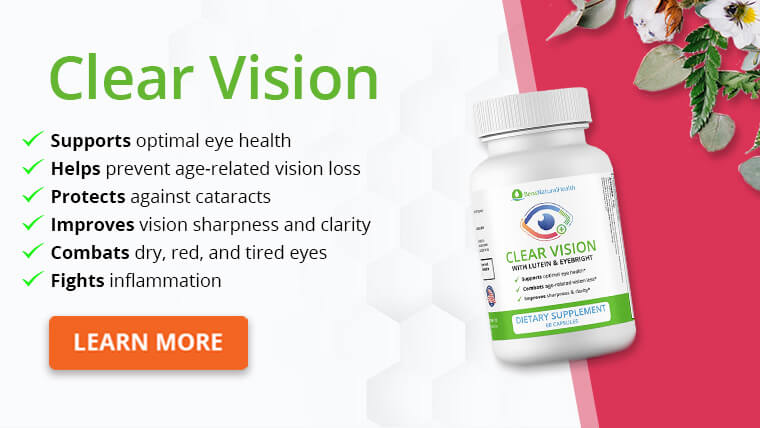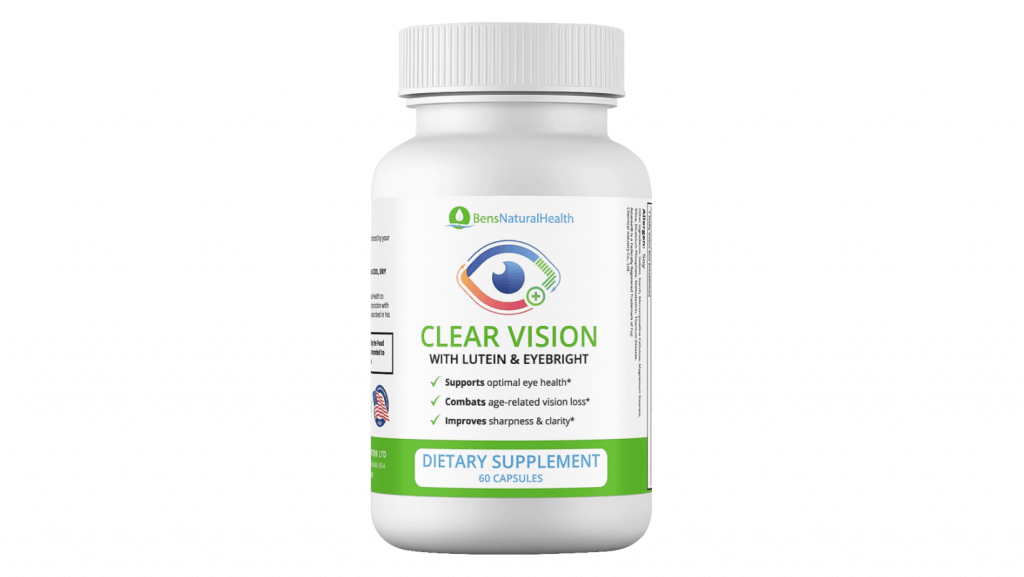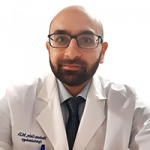As we get older, our body undergoes many gradual changes as part of the aging process. And there are many common vision problems with aging eyes you encounter.
While these changes are inevitable, certain measures can slow them down and maximize our functions allowing us to enjoy a productive and healthy life.
It is essential to realize that our eyes are no exception to this fact. Age-related changes affect all tissues inside the eye and around it and can have variable presentations.
It goes without saying that good vision is indispensable, not only to enjoy seeing our beloved ones but also to function independently and continue performing our daily activities. This article will discuss the common age-related eye changes and disorders that might arise as we are getting older.
We will also discuss some evidence-based eye care tips and recommendations to keep your eyes healthy and help you enjoy your eyesight throughout your whole life.
Get Your FREE Eye Health Diet Plan
- Nine most important vitamins for eye health
- How to naturally protect and improve your eye health as you age
- Developed exclusively by our medical doctor
How your eyes change with age
This section will discuss some of the common age-related changes that happen to most people due to the aging process. While these changes are usually physiological and carry minimal risk for losing vision, it is important to understand how our eyes normally age.
Natural lens changes
Beginning in the early to mid-40s, the natural lens inside the eye starts to get thicker, lose its elasticity, and become less flexible. This impairs our natural ability to change our focus seamlessly from distance to near. This normal change in the eye’s focusing ability, called presbyopia, will continue to progress over time. It is a completely physiological process that carries no risk to eye health.
Many adults may start to have problems seeing clearly at close distances, especially when reading and working on the computer or doing any near task. This is one of the most common eye problems adults above the age of 40 starts to develop gradually.
Reading small print labels on your medications or groceries may be blurred, especially in dim lighting conditions. It is important to realize that these changes are completely normal and can be easily fixed with eyeglasses, contact lenses, or even surgery.
External eye appearance and eyelid changes
The eye lies in a bony socket called the orbit and is surrounded by a cushion of thick fatty tissue called the orbital fat. Orbital fat has many functions, including eye protection, and is responsible for the eyelid’s regular smooth contour.
The orbital fat atrophies with age, causing the eyeball to recede into its bony socket (the medical term of this condition is enophthalmos). While the sinking of the eyeballs might be cosmetically unappealing, it usually does not affect vision.
The eyelid skin and muscles are also common sites for aging marks. Aging leads to weakening the muscles, connective tissue, and loss of skin elasticity resulting in increased redundancy of the eyelid skin. In addition, gravity weighs down the skin.
The interplay of these factors leads to classic hooding of the upper lids, a condition called dermatochalasis. Moreover, weakening of the orbital septum and herniation of the orbital fat adds to the bulging appearance. Dermatochalasis can be very severe to the extent that it can obstruct the upper field of vision.
Changes affecting tear film production
With age, the lacrimal glands produce fewer tears, while the composition of tears changes and the tear film’s wetting efficiency and stability aree reduced. This leads to eye dryness which is very common with aging. Irritation, foreign body sensation, grittiness, and pain can ensue and affect many activities, such as reading or watching television. Many people find the use of artificial tears helpful.
Pupil changes with age
The pupil is the central aperture in the iris that regulates the amount of light entering the eye. In dim light conditions, the pupil gets larger to allow for more light to enter the eye.
Under bright light conditions, the pupil gets narrower to decrease the amount of light getting to the back of the eye or the retina, which is the light-sensing layer that receives the light signal and transfers it to the brain through the optic nerve.
With age, pupil diameter decreases, reducing the admittance of light to the eye. As we get older, there is also a decrease in the pupil’s ability to adapt to the different light intensities, especially in changing from light to dark light conditions. Care should be taken because these changes increase older people’s risk of falls and other accidents, for example, when leaving a brightly lit bathroom to walk up or down a flight of stairs with poor illumination.

Common vision problems with aging eyes
This section will discuss the impact of common vision problems with aging eyes and how we can address these changes to ensure maximum quality of vision as we age.
Presbyopia
As discussed above, presbyopia is a physiological aging process that impairs our natural lens ability to focus on near objects. As the process occurs very gradually, you will be able to compensate for losing this focusing mechanism by holding the reading material farther away from the eye.
People who have never used eyeglasses or contact lenses to correct distance vision can be worried and frustrated by the loss of ability to read the small print at a short distance, such as during searching for contacts on their phones or during working on the computer.
People with presbyopia have several options to regain clear close-up vision. These include:
Eyeglasses
If you do not have any other errors of refraction (nearsightedness, farsightedness, or astigmatism) and presbyopia is your only vision problem, reading eyeglasses is all you need. Reading eyeglasses are available over the counter and can be bought without a prescription. However, the specific power of reading glasses that you need should be determined by your eye doctor.
If you already wear eyeglasses for other errors of refraction, you might consider bifocals, trifocals, or progressive lenses after discussion with your eye doctor.
- Bifocals correct for close-up and far vision. The lens is divided by a line, which may or may not be visible. The bottom of the lens refracts light for close-up vision. The top segment of the lens refracts light for distant vision.
- Trifocals have three lens areas to correct for close-up, mid-range, and distant vision.
- Progressive lenses have many more lens powers than bifocals or trifocals, and there is a gradual change in power from point to point across the surface of the lens, with the highest power towards the bottom of the lens. They do not have any lines like bifocal and trifocal. Therefore they have a better appearance, and more people now want to get progressive lenses.
Contact Lenses
Some people prefer to wear contact lenses rather than eyeglasses. However, contact lenses need special care to keep them clean and avoid serious eye infections. There are two types of contact lenses that help presbyopia:
- Monovision contacts. These correct one eye for distance vision and the other for close-up vision. You need to adapt to and train your brain to see this way. You may find you lose your ability to judge something’s distance or speed with monovision lenses. Depth perception might also be impaired with these contact lenses.
- Multifocal contacts. These lenses have several rings or zones set at different powers. With this design, you are actually using both near and far vision at the same time. However, your brain gradually learns to automatically select the right focus for what you want to see.
Surgery
- Refractive surgery. Some people decide to have laser refractive surgery (LASIK) to correct presbyopia. Using a laser, the eye surgeon can reshape the cornea for clear far vision in one eye and close-up vision in the other. In many ways, this is like wearing monovision contact lenses. Your eye doctor may suggest that you try monovision lenses before having surgery. That way, you can decide if monovision is a comfortable option for you.
- Corneal inlays are optically designed to correct presbyopia. These are tiny optical devices implanted in the cornea during a minimally invasive surgical procedure, restoring close-up vision. These inlays require a careful and thorough patient selection to make sure it is the appropriate procedure for the patient. Talk with your eye doctor to see whether you are a candidate for a corneal inlay and which type may work best for you.
Need for more light. With the increased thickening of our natural lens inside our eyes as we age, we might need more light to read and do the same tasks that we used to do with less light intensity. Brighter lights in your work area will help make reading and other close-up tasks easier.
Glare becomes a problem from headlight when driving at night, or even from the sun reflecting off windshields during the day driving. This is attributed to the lens’s natural aging process inside your eye and indicates the early stage of cataract formation.
Common age-related eye diseases
Age is considered an important unavoidable risk factor for a lot of eye disorders. In the following section, we will discuss the common age-related eye diseases. We will also shed light briefly on the treatment of these eye disorders.
Cataract
Our natural lens proteins break down with age. This results in a gradual decrease in the optical clarity of our natural lens with cataract formation. Age is the most important risk factor for cataract formation, but other risk factors include diabetes mellitus, excessive sun exposure, and prolonged use of corticosteroid medications that might play a role in cataract development.
Cataract formation is usually a slow and gradual process. The threshold for surgical intervention in cataract cases varies between patients and depends on your visual needs and ability to perform your daily activities. When a cataract interferes with everyday activities, your eye doctor may recommend surgery.
Cataract surgery is one of the commonest procedures worldwide, with a very high success rate and excellent safety profile. Standard routine cataract surgery is usually performed through a very tiny incision in your cornea with no need for suturing in most cases. There are different approaches for cataract surgery with variable artificial lens choices. It is important to discuss the best approach for your surgery with your eye doctor and the most appropriate lens choice for you.
Dry eye
This is another common eye disorder that increases with aging. It is mainly due to the impairment of the tear glands. Symptoms vary in severity and might be very minimal or very disturbing and impair your quality of vision or even quality of life. You may feel stinging or burning, a sandy feeling as if something is in the eye, or other discomforts.
Depending on the severity of your symptoms, simple options such as artificial tears might work well. If your symptoms are very severe, discuss with your regular eye doctor to refer you to a cornea specialist who can offer more options to treat your dry eye.
Glaucoma
It is a group of eye diseases characterized by damage to the optic nerve resulting in loss of peripheral vision. As the disease progresses without adequate treatment, loss of central vision will eventually occur, resulting in blindness. Glaucoma is often asymptomatic, which makes it harder to detect, especially in the early stages.
People with a family history of glaucoma, African Americans, and older adults have a higher risk of developing the disease. Elevated pressure inside your eye is the main risk factor for glaucoma. The only way to protect yourself from severe vision loss from glaucoma is by routine eye exams.
During routine eye exams, your eye doctor checks your eye pressure and performs the back of the eye examination to check on your optic nerve’s status. We can treat glaucoma with prescription eye drops, laser procedures, or surgery.
Retinal diseases
are a leading cause of blindness worldwide. Retinal disorders that affect aging eyes include:
Age-related macular degeneration- AMD
As the name implies, this disease is caused by age-related degenerative changes within the central portion of the retina, which is called the macula resulting in central vision loss. There are 2 types of AMD, dry and wet. There are dietary supplements (AREDS2) that might slow down the progress of certain stages of dry AMD. Moreover, different medications can be injected inside the eye to treat wet AMD. If you have AMD, discuss with your eye doctor the different available treatment options.
Diabetic retinopathy
It is a condition that occurs in people with diabetes. The long duration of diabetes and the poor control of blood sugar can lead to progressive damage to the tiny blood vessels that nourish the retina, which impairs the blood supply to the retina resulting in the development of abnormal fibrovascular membranes.
These membranes can leak fluid, blood, or contract and cause retinal detachment,, resulting in blindness. Keeping your blood sugar, blood pressure, and cholesterol under control can prevent diabetic retinopathy or slow its progress. Laser procedures at the appropriate timing can effectively prevent diabetic retinopathy from getting worse.
Retinal detachment
This is one of the few eye emergencies that happens when the retina separates from the back of the eye. Warning symptoms that might precede retinal detachment include seeing new floaters or flashes of light, or if it seems like a curtain falling in front of your eye. If you have any of these symptoms, you need to obtain a full eye exam right away. Timing is critical in repairing retinal detachment, especially if the detachment is still away from central vision.
How to safeguard your eye health
It cannot be stressed enough that regular eye exams are crucial for detecting different eye disorders. The earlier the diagnosis, the higher the chances of preserving your eyesight and avoiding vision loss.
An annual eye exam is recommended if you do not have any eye diseases or any medical condition that can affect your eyes, such as diabetes. You might need more frequent eye exams if you have an eye disorder or medical conditions such as diabetes.
Moreover, lifestyle plays an important role in reducing the risk and/or slowing the progression of some eye diseases such as AMD and diabetic retinopathy. Multiple studies recommend the following measures that might help you to enjoy an excellent quality of vision.
- Avoid smoking: Smoking is the most important modifiable risk factor for developing AMD.
- Maintain a healthy weight and exercise regularly.
- Choose a diet rich in fruits and vegetables and limit the consumption of processed food, and include fish in your diet.
- Keep your medical conditions under control, such as diabetes and high blood pressure.
- Avoid excessive UV light exposure: Studies are controversial over the role of UV rays in developing AMD and cataracts. However, UV-protective eyeglasses are recommended as there are no adverse effects from wearing them.
Our Eye Health Supplement: Clear Vision
Our eye health supplement, Clear Vision, is designed to work as part of a healthy diet and lifestyle to maintain optimal eye health.

Clear Vision contains ingredients clinically proven to support optimal eye health, improve vision sharpness, combat age-related vision loss, and protect against cataracts.
Conclusion
Moreover, aging is an inevitable process that links with many eye problems and disorders. Identification and early diagnosis of these common age-related eye conditions are crucial for proper management and treatment. So, obtaining routine eye exams and adopting a healthy lifestyle are the best ways to protect your eyesight.






